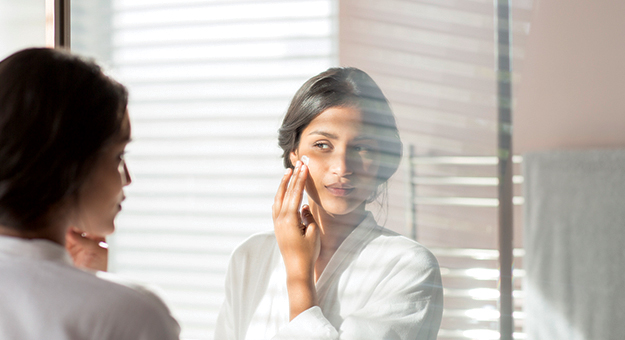There’s a rule and order to this world, otherwise it’s just a big confusion and massive chaos. We follow these guidelines as a tenet of life. And we tend to obey all that has been working for us like clockwork. Take our skincare for example. Everyone knows the steps of a proper skincare routine – cleanse, tone and moisturise – but like life, we can get complacent. What may work for you 10 months ago, many not work as well today. So believe us when we say it gets more exciting when you mix things up a little.
Aside from asking you to do a full skincare overhaul, how about perfecting the art of layering? We recommend focusing on the powerhouse known as serum. Yes, it is perfectly ok to mix and match your serums; in fact layering serum is beneficial to ensure that your skin is getting enough nourishing ingredients. Serums are concentrated treatment that contains more active ingredients for the skin than say, your moisturisers. Hence, these tiny wonders packed a punch to deliver all the skin-loving benefits to the deepest layers.
THE KNOW-HOWS
1. What is your concern?
As serum is formulated to work as treatment, think about what is it that you need to treat or which area does your skin need help? Is it dryness? Pigmentation? Sagging and loss of firmness? Your serum should work like a targeted action to help you address these issues and support your skin to achieve its optimal health. Also keep in mind that environmental and hormonal changes can affect how your skin behave as well.
2. Lightest to the thickest
Now that you understand your skin a little better, the “rule” of thumb when it comes to layering serum is to apply no more than three at one time. Start with the thinnest or lightest product as this will deliver active ingredients into the skin most efficiently and it’s easier to build upon.
3. How to layer?
Next consider the formulation; as a general guide – Vitamin C to brighten skin, peptides for wrinkles, salicylic acid for oily or acne-prone skin and hyaluronic acid to moisturise and plump up skin. This approach is then further divided into day and night use.
For example, use antioxidant-based serum during the day to help combat the damaging effects of the sun and environment; while for night time use retinol-based serum for anti-ageing support. To take it a step further – if you want to combine anti-ageing with brightening, the former should go on the skin first to target the dermis and followed by the latter to work on the pigment cells.
4. Pat them in
With each serum that you put on, do allow at least a minute to let your skin absorb the treatment fully. Be sure to pat the serum on your face and lightly massage in gentle circular motion to increase blood circulation. The experts are still divided to the pat or rub methods, we say try both and see what works for you.
Pro-tip: If you’re pressed for time in the morning, you can add a couple drops of serum into your foundation too.
5. Seal it in
Your serum is as good as the moisturiser you apply at the end. This step is a must to help seal in the active ingredients of your serum to make them more effective.
Below our picks of serums to create the best cocktail for your face
{insert gallery tpl=”slide-freesize.tpl” id=”[Стандартная] how to layer serums” rid=”6028″ order=”a_tstamp”}
| SHARE THE STORY | |
| Explore More |




